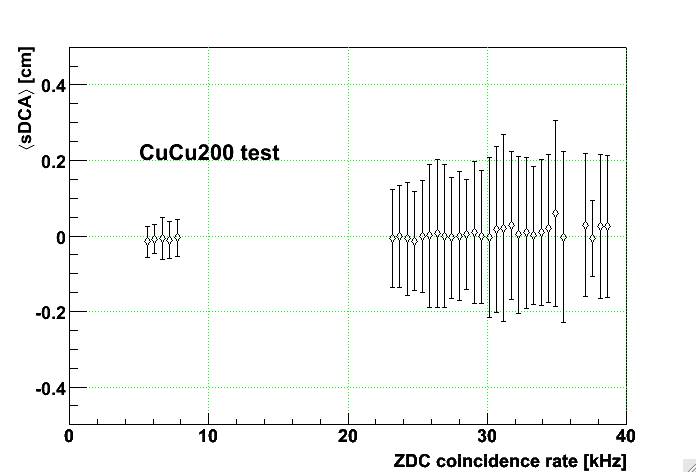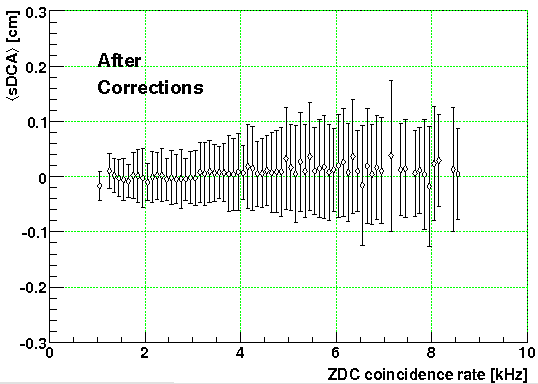CuCu200 (2005)
One can clearly see the two produced sets: low and high luminosities. The low luminosities are doing just fine. The high luminosities are much higher than anything which we've had before in heavy ions. The corrections are not doing quite as well as they did in AuAu200 at (not nearly so) high luminosities (the spread in <sDCA> is greater), and this may be due to a couple reasons: 1) Event-by-Event corrections need high stats in terms of track counts, and CuCu200 events don't provide as many tracks as AuAu200, and 2) ionization backgrounds in the TPC may have been worse in 2005. The Event-by-Event correction method benefits from higher data acquistion rates, not from higher collision rates.
My take on this is that while the momentum will be slightly more degraded than the AuAu200, this is going to still be good enough for physics out to perhaps 12-15 GeV/c when using primary tracks (I would estimate this contributes ~1.5% error per GeV/c of momentum).
As an additional note, there is the possibility for minor improvement in the performance of the corrections by switching to the 1-second RICH scalers for fallback mode of the Event-by-Event correction. This data was processed with the PrePass and used the 30-second RICH scalers as a seed for the PrePass. By "minor improvement", I mean perhaps 4% less smearing as an average over all events, at best. It's technically more like 10% of the events (those that fall back to the PrePass SpaceCharge correction) might see a (at best) 40% improvement, while the other 90% of the events are as they are now. So 4% of 1.5% smearing per GeV/c of pt improves it to ~1.44% (though I don't actually know those numbers to quite that level of precision; it's only so that one can have a quantitative understanding).
CuCu200 test data:

- Printer-friendly version
- Login or register to post comments

